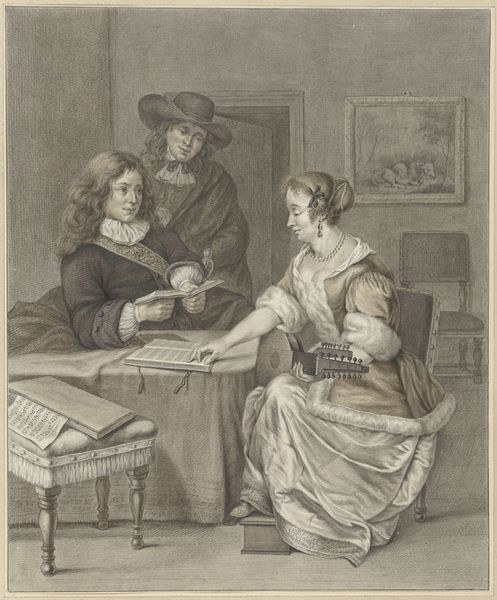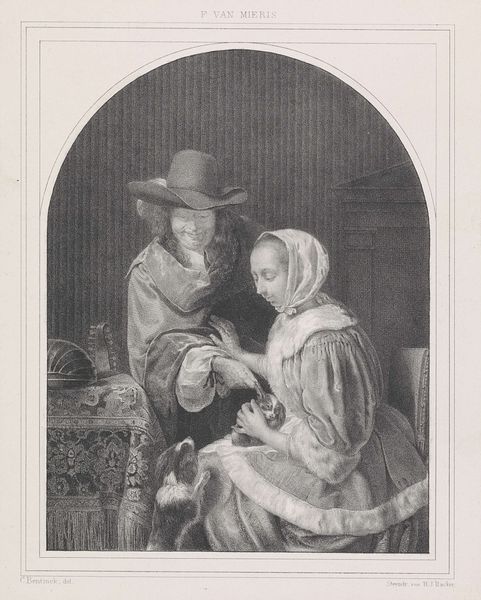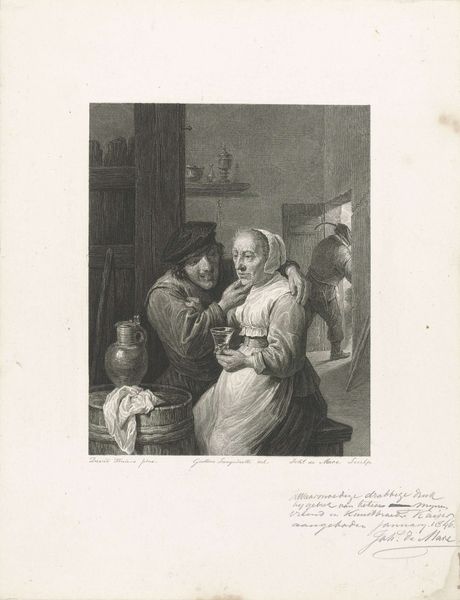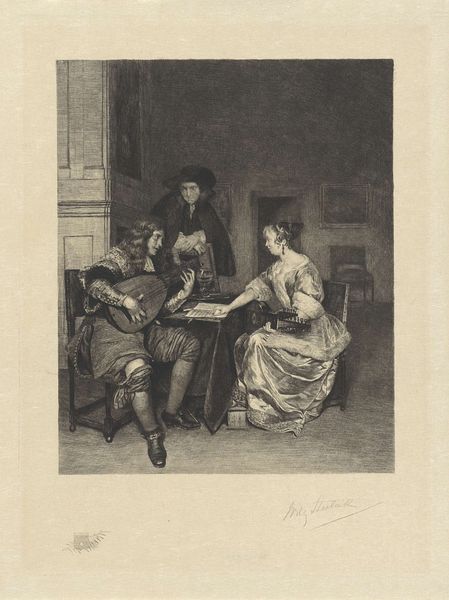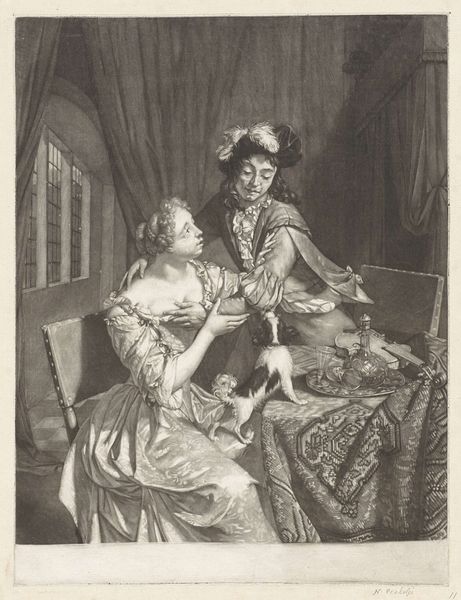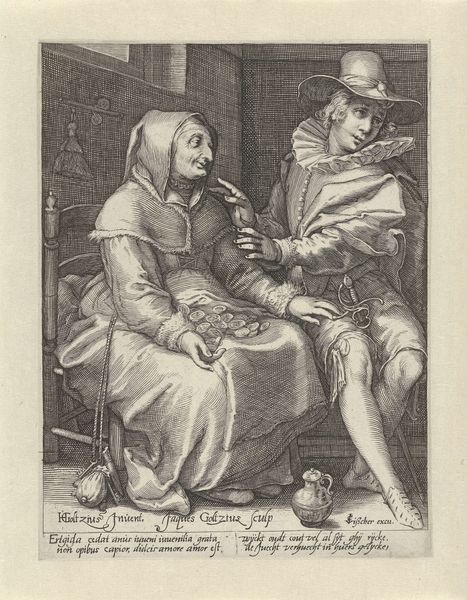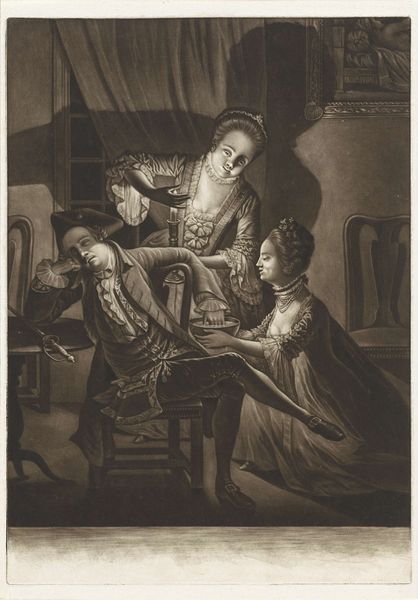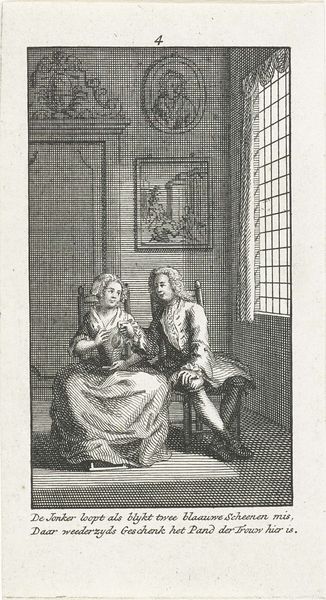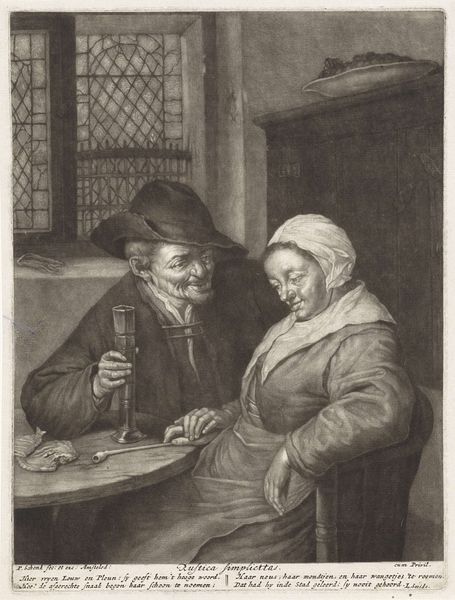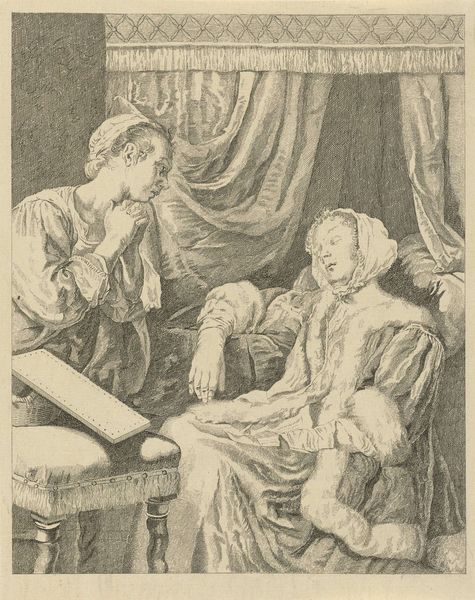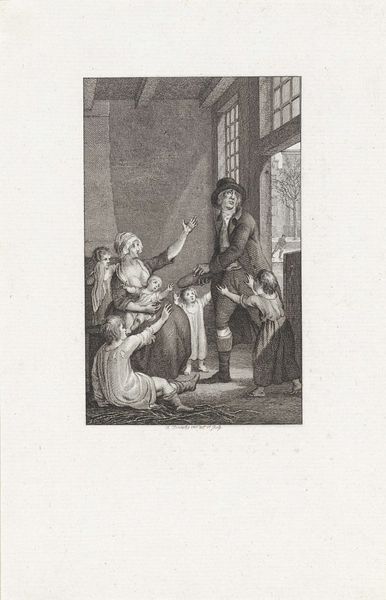
drawing, ink, engraving
#
portrait
#
drawing
#
baroque
#
charcoal drawing
#
charcoal art
#
ink
#
genre-painting
#
engraving
Dimensions: height 271 mm, width 188 mm
Copyright: Rijks Museum: Open Domain
Editor: Here we have "Man Playing a Violin and a Woman Singing" by Jacob Gole, likely created between 1680 and 1700. It's an engraving, and the scene feels very domestic. What aspects of this work particularly stand out to you? Curator: I find it interesting to consider this work in the context of 17th-century Dutch society. The materials – ink and paper – speak volumes about the accessibility and spread of images during that time. How did the economics of printmaking influence the artist's choices and the audience's perception? Editor: That’s a great point, the materials are quite humble, but I'd not considered their impact. Does the choice of engraving over, say, painting, reflect a specific intent or audience? Curator: Absolutely. Engravings were more easily reproduced and distributed than paintings. Consider the labour involved: the craftsman meticulously cutting the image into the plate, then the printing process itself. This brings art to a broader consumer base, challenging the idea of art as purely a luxury commodity. We might also ask about the societal function of music making; was it common? And how does that get captured for the ages through engravings, and disseminated through these means? Editor: That reframes how I see this! So it’s not just about the image itself, but the whole system of production and consumption that surrounds it. Curator: Precisely. Think about the implications. By analyzing the materiality and mode of production, we understand how art becomes integrated into everyday life and reflects larger economic and social structures. And perhaps even the availability of cheap music making technologies at the time too! Editor: I see now! I hadn't thought about the economics behind even creating the artwork itself, or who had access to these scenes of leisure. Curator: Reflecting on the historical and material conditions of its creation provides insight, even on these relatively simple scenes, isn’t it?
Comments
No comments
Be the first to comment and join the conversation on the ultimate creative platform.
